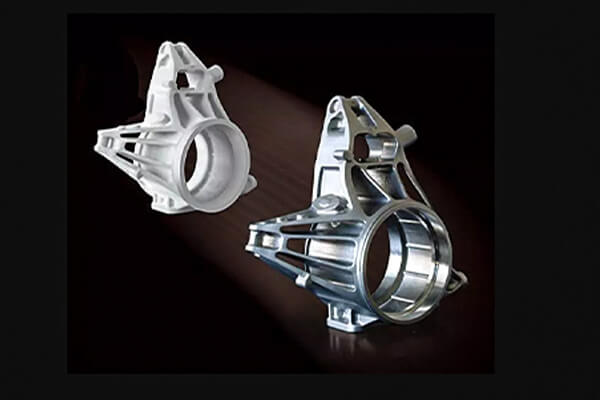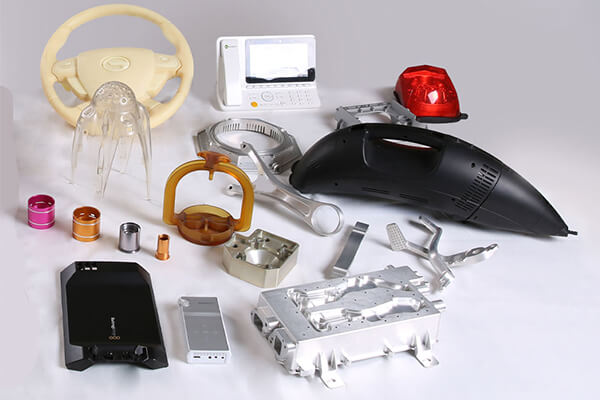Prototype Development: Planning of Making a Prototype
This is one of the most crucial stages since it establishes whether the product can be manufactured or used. Because the machinist can remove any superfluous features from the pieces at this point, it also lowers prices. You should study this article through to the finish if you’re interested in learning what goes into the prototype development stage.

What is Prototype Development?
Prototype Development, in essence, involves creating a representation or imitation of a component that illustrates the key features of a product and explores potential avenues before committing to the full development of that component. A prototype can take various forms, ranging from a detailed hand-drawn sketch to a fully functional version of the product. Therefore, the term “prototype development” encompasses the series of processes employed by manufacturers to bring the prototype to fruition, with some also referring to it as prototype manufacturing.

Categories of Prototype Development
Prototypes can be categorized into four distinct types based on the design of the product and the intended functionality of the final product:
Working Prototype
As the name suggests, a working prototype is created to showcase as many features and functions of the final product as possible. It serves as a tangible demonstration of the product’s capabilities.
Functional Prototype
Similar to a working prototype, a functional prototype undergoes a development process that aligns with the final product’s features. However, the functional prototype is often produced on a different scale and may involve different techniques in its creation.
Visual Prototype
Designed to project the shapes, measurements, and overall appearance of the product concept, a visual prototype focuses on the aesthetics and outward characteristics. Unlike working prototypes, it does not demonstrate the functionality of the product.
User Experience Prototype
A user experience prototype is crafted to provide a detailed representation that aids in further research and development of the product. While not necessarily showcasing full functionality, it offers insights into the user experience aspects of the final product.
Significance of Prototype Development
The stage of prototype development holds immense importance in the manufacturing of every component. Here are compelling reasons why manufacturers should not underestimate the significance of the prototype development stage:
Facilitating Product Presentation
Creating a part or product without the backing of clients or stakeholders is counterproductive. Utilizing a prototype enhances the persuasiveness of the presentation, as clients and stakeholders can physically interact with and provide feedback on the prototype. This tangible experience fosters confidence and facilitates more informed decision-making.
Subjecting the Concept to Practical Evaluation
Merely conceptualizing a part’s design does not guarantee its functionality under real-world conditions. Developing a prototype serves as a crucial step in assessing how the part will perform in its intended environment. This testing phase enables manufacturers to identify necessary design adjustments or elements that may need to be discarded.
Cost-Effective Production
While it may seem counterintuitive to allocate resources to prototype production, the incurred costs are nominal compared to potential losses resulting from a trial-and-error approach in the absence of a prototype. The prototype allows manufacturers to identify and implement necessary revisions with precision, providing a more accurate estimate of production costs and ultimately minimizing wasteful expenditure.
Distinction Between a Prototype and the Final Product
In general, manufacturers and product developers strive to minimize disparities between a prototype and the eventual product. While efforts are made to maintain similarity, distinctions may arise in terms of appearance, materials employed, or the machining processes involved.
For instance, the raw materials utilized in the final product are often more costly compared to the prototype, which may use more economical materials. Despite the variance in materials, the properties of the prototype typically mirror those of the final product. This discrepancy in raw materials can impact the visual aesthetics and finishing of the end product.
Furthermore, there is a disparity in the quantities produced for prototypes and final products. Prototypes are typically manufactured in limited quantities, serving the primary purpose of aiding the production process. Conversely, final products are manufactured in larger batches for various reasons. The manufacturing process for the final product may be intricate, necessitating larger production volumes. Additionally, producing in batches offers efficiency gains in terms of both time and cost savings.
Phases of Prototype Development
As previously mentioned, the process of developing a product prototype generally unfolds in three main phases:
Alpha Phase
During the alpha phase of prototype development, two pivotal questions guide the creation of prototypes: How will the part look and feel? Will it work?
Manufacturers typically produce separate prototypes for each question, although some may create a single prototype to address both aspects. These prototypes are commonly known as “appearance” and “proof of concept” prototypes, respectively.
The proof of concept prototype focuses on testing the functionality of the part and is less concerned with its appearance. It utilizes cost-effective materials like cardboard, motors, and switches to assess the preliminary feasibility of the design.
The appearance prototype follows the success of the proof of concept prototype and prioritizes aesthetics. This prototype may not have any functional aspects and employs more expensive materials, often utilizing 3D printing as a common machining process.
Successful outcomes in this phase may lead to the preparation for more intricate machining methods, such as CNC machining, for subsequent prototypes.
Beta Phase
Building upon feedback from clients and stakeholders in the alpha phase, the beta phase aims to create more sophisticated prototypes that closely resemble the final product in terms of appearance and functionality. Two key prototypes emerge in this stage:
Engineering Prototype:
An enhanced version of the proof of concept prototype, the engineering prototype seeks to achieve a visually, manufacturably, and functionally accurate representation of the final product. More sophisticated design elements are incorporated based on previous feedback. Complex manufacturing methods like injection molding and sheet metal fabrication are employed, using high-quality materials.
Production Prototype:
Following the success of the engineering prototype, the production prototype is created. This prototype closely mirrors the final product and serves as the last step before mass production and tooling setup. While it may not use the expensive materials of the final product, it plays a crucial role in final design approval and aesthetic decisions.
In some instances, machinists may combine the engineering and production prototypes based on risk assessments associated with the product.
Pilot Phase
The pilot phase involves the creation of the final or pilot prototype, representing the exact appearance of subsequent part units, pending any further adjustments. Despite its prototype designation, this iteration may undergo some changes, such as alterations to production methods for specific metal and plastic parts.
After final adjustments, the pilot prototype undergoes certification through independent review committees. Upon certification, the product is ready for full-scale production in the commercial phase.
While terminology may vary, the three phases—Alpha, Beta, and Pilot—are broadly recognized in the realm of prototype development.
Common Errors in Prototype Development
Novices in the industry often harbor misconceptions about the prototype development stage, leading to potential issues with the final product. Some common mistakes include:
Neglecting Expert Consultation
Overlooking the importance of seeking expert advice at each stage of prototype development can result in critical errors. Consulting professionals with relevant experience is essential for navigating the complexities of the process.
Inaccurate Cost Estimation
Failing to make a precise cost estimation for prototype development can lead to budgetary overruns. A thorough assessment of expenses is crucial to avoid financial setbacks during the course of development.
Insufficient User Feedback
Overlooking the significance of user feedback is a common pitfall. Gathering substantial input from users is vital for refining and enhancing the prototype, ensuring its alignment with user needs and preferences.
Imposing Fixed Time Frames
Attempting to fit the prototype development process into a rigid time frame can compromise the quality and thoroughness of the process. The duration of the process should be flexible, adapting to the complexity of the part being developed.
A key aspect of ensuring the success of your prototype development lies in seeking guidance from seasoned professionals. At Sungplastic, we offer the expertise necessary to make your product prototype manufacturing a triumph.
Rapid Prototyping Services for Prototype Development
Any aspect of production that involves developing a prototype need for extensive planning and thoughtful consideration.
Do you need a business to manage the development of your prototype? You don’t need to search any farther since Sungplastic possesses all the necessary technical know-how. Our factory and staff, who have over 20 years of manufacturing expertise, can expertly revise your design to make it successful and save you time.
You may get the outstanding service you want at a very affordable cost when you work with us. We don’t cut corners when it comes to quality, and our service is reasonably priced.
As soon as you give us your project, we evaluate it critically using unbiased user input. We also pay attention to any directions or changes you would like us to make. We follow your instructions and lead you every step of the way in the correct direction.
FAQs
Q: What is the duration of the prototype development process?
A: A lot relies on what kind of product it is. From idea to commercial production, it might take anywhere from a few months to several years.
Q: What is the price of prototyping a part?
A: The cost of prototypes vary according to the product’s sophistication and stage of prototype development. The appearance prototype, for instance, might cost between $500 and $150.
Get a free quote and design analysis today.
We’ll reply to you within 6 working hours.
We respect your privacy.
+86 139 2927 4777 (WhatsApp, Wechat)
